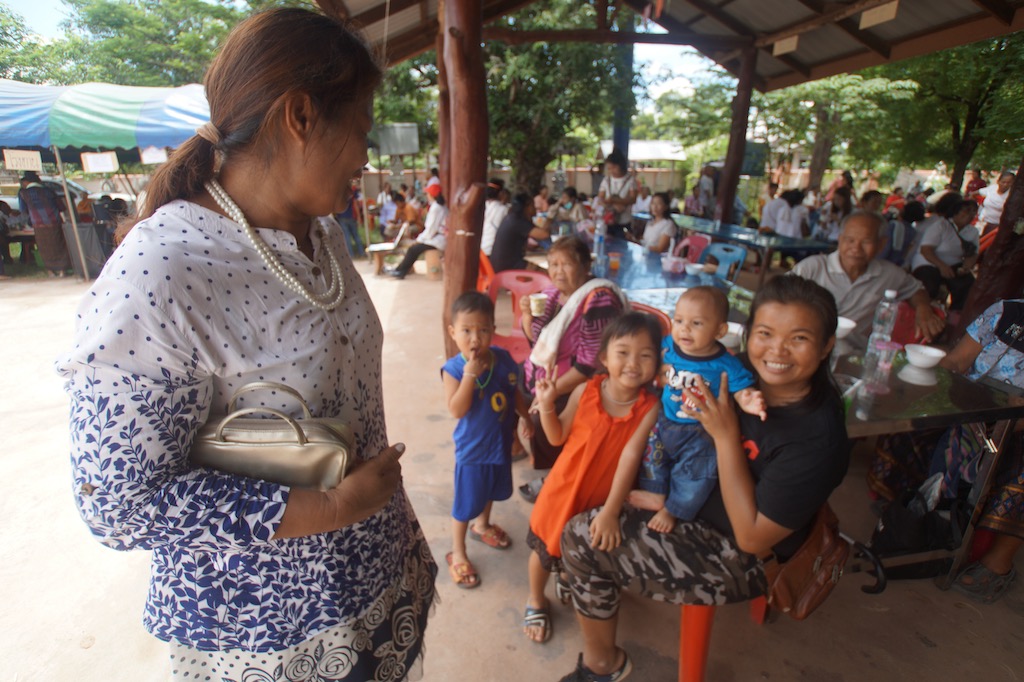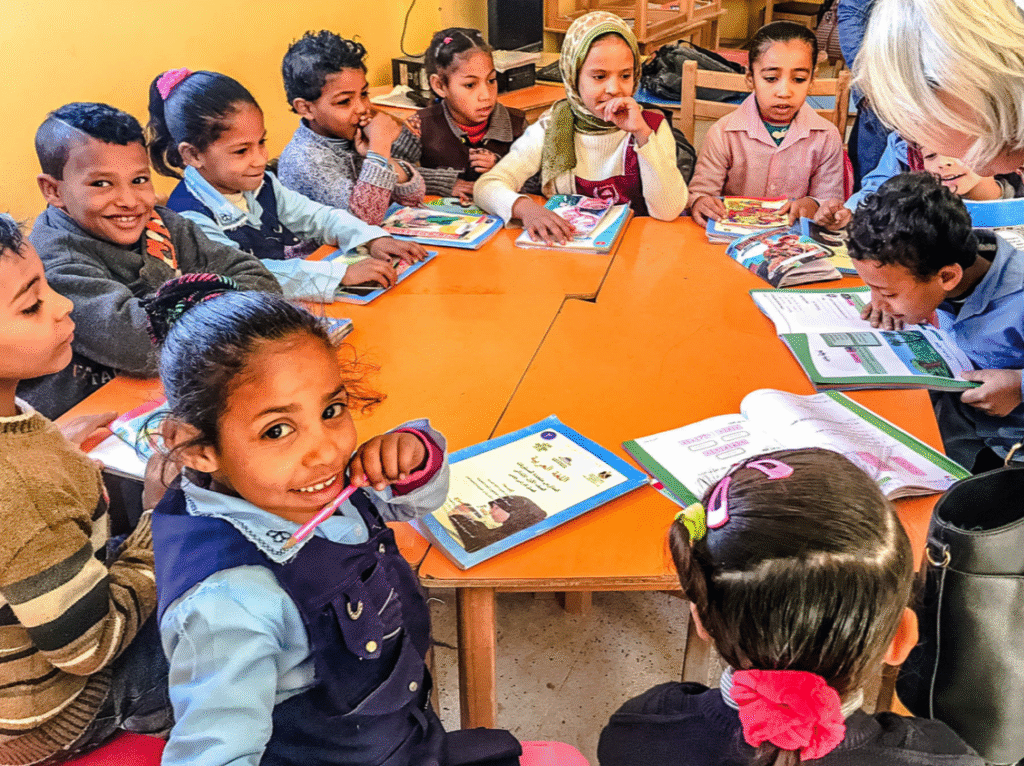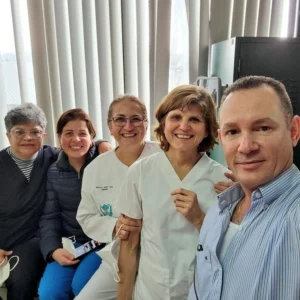Volunteerism is a wonderful way to contribute to society, make a difference, and connect with people from all walks of life. Whether it’s helping out at a local soup kitchen, participating in environmental cleanups, or supporting educational programs, volunteers play a crucial role in addressing societal needs. However, when volunteering in diverse communities or abroad, language barriers can often pose a significant challenge to effective communication.
Imagine finding yourself in a foreign country, eager to lend a helping hand, but struggling to understand and be understood due to language differences. It can be frustrating and disheartening, hindering your ability to connect with those you’re trying to assist. That’s why communication is a vital aspect of volunteerism, breaking down barriers and fostering meaningful connections.
In this article, we will explore the importance of communication in volunteerism, understanding the role it plays in bridging gaps and building relationships. We’ll also delve into strategies for overcoming language barriers, the significance of non-verbal communication, effective communication techniques, the importance of training and education for volunteers, leveraging technology, and creating a diverse and inclusive volunteer community.
By the end of this article, you’ll have a deeper understanding of the importance of communication in volunteerism, as well as practical tips to improve and enhance your interactions with diverse communities and individuals. So, let’s dive in and learn how to break down those language barriers!

Understanding the Role of Communication in Volunteerism
Volunteering is a wonderful way to give back to your community and make a positive impact on the world. Whether you’re volunteering at a local charity or participating in a global humanitarian mission, effective communication plays a crucial role in ensuring the success of your efforts. In this section, we will explore the importance of communication in volunteerism and how it can enhance collaboration, task assignments, and building relationships.
Clear Instructions and Task Assignments
Clear communication is essential when it comes to giving instructions and assigning tasks to volunteers. By providing clear and concise instructions, volunteers will have a better understanding of what is expected of them and be able to carry out their duties effectively. Here are some tips for improving communication in task assignments:
- Use simple and straightforward language to avoid confusion.
- Break down complex tasks into smaller, manageable steps.
- Provide visual aids, such as diagrams or checklists, to supplement verbal instructions.
- Encourage volunteers to ask questions and seek clarification if they are unsure about any aspect of their tasks.
Building Relationships and Trust
Building relationships and trust is crucial in volunteerism, as it fosters a sense of camaraderie and teamwork among volunteers. Effective communication plays a significant role in establishing and nurturing these relationships. Here are a few ways to improve communication for relationship-building:
- Take the time to get to know your fellow volunteers on a personal level. Show genuine interest in their lives and experiences.
- Communicate openly and honestly, expressing your thoughts and concerns while being receptive to others’ viewpoints.
- Be a good listener. Give your full attention when someone is speaking and provide constructive feedback when necessary.
- Use positive and encouraging language to build a supportive and inclusive volunteer community.
Effective Team Collaboration
Volunteer projects often require teamwork and collaboration to achieve their goals. Effective communication within the team is essential for a smooth workflow and successful outcomes. Here are some strategies to enhance team collaboration through communication:
- Foster an environment where everyone feels comfortable sharing ideas and opinions.
- Encourage open and transparent communication channels, such as regular team meetings or online forums.
- Establish clear lines of communication, ensuring that everyone knows whom to contact for specific issues or questions.
- Use technology tools, like project management software or communication apps, to facilitate efficient collaboration and information sharing.

By understanding the importance of communication in volunteerism, you can actively work towards improving communication practices within volunteer projects. Clear instructions and task assignments, building relationships and trust, and effective team collaboration are just some of the ways that communication can enhance your volunteer experience. Remember, effective communication not only benefits the project but also creates a positive and rewarding experience for everyone involved.
Overcoming Language Barriers
Volunteering is a universal language of kindness and compassion. It allows people from different backgrounds and cultures to come together and make a positive impact in the world. However, one challenge that volunteers often face is communicating effectively with individuals who speak a different language. Language barriers can create misunderstandings, hinder productivity, and even lead to frustration. But fear not! In this section, we’ll explore some strategies to help you overcome language barriers and enhance communication in your volunteer work.
Learning Basic Phrases and Key Vocabulary
Learning a few basic phrases and key vocabulary in the local language can go a long way in breaking down language barriers. It shows your willingness to make an effort and can help you connect with the local community on a more personal level. Take the time to learn common greetings, thank-yous, and simple phrases that will come in handy during your volunteer work. A little bit of effort can make a big difference in establishing rapport and building trust with the people you are serving.
Utilizing Translation Tools and Apps
In this digital age, we are fortunate to have a wide range of translation tools and apps at our fingertips. These tools can help facilitate communication by quickly translating text and even speech in real-time. Whether you need to communicate with someone face-to-face or exchange written messages, translation apps can bridge the language gap and help you communicate effectively. Some popular translation apps include Google Translate, iTranslate, and Microsoft Translator. Just make sure to have an internet connection or download language packs beforehand to ensure smooth communication.
Engaging Local Interpreters
When faced with a complex conversation or a situation where precise communication is crucial, engaging a local interpreter can be a game-changer. Interpreters are professionals trained in working as language bridges between individuals who don’t share a common language. They have a deep understanding of both cultures and can accurately convey messages, ensuring effective communication between volunteers and the local community. Reach out to local organizations, language schools, or professional interpreters to find the right interpreter for your needs.

Remember, communication is not just about spoken words. Non-verbal cues also play a significant role in conveying messages and establishing understanding. So, keep reading to learn about the importance of non-verbal communication in overcoming language barriers.
“The limits of my language are the limits of my world.” – Ludwig Wittgenstein
Importance of Non-Verbal Communication
When it comes to effective communication, we often focus primarily on what we say and how we say it. However, non-verbal communication plays a crucial role in expressing ourselves and understanding others. In the context of volunteerism, where language barriers may exist, non-verbal communication becomes even more important. Let’s explore why non-verbal communication is essential in volunteer work:
Body Language and Facial Expressions
- Body language can convey emotions, attitudes, and intentions without the need for words. For example, a smile can express warmth and friendliness, while crossed arms may indicate defensiveness or disagreement.
- Facial expressions can provide insight into someone’s feelings and reactions. Volunteers can observe and interpret facial expressions to gauge if someone is comfortable, confused, or in need of assistance.
Gestures and Hand Signals
- Gestures are universal forms of communication that transcend language barriers. Simple hand gestures like pointing, nodding, or waving can convey meaning and help volunteers interact with others.
- Hand signals can be especially valuable in situations where verbal communication is limited or not possible. For example, thumbs up can signify approval, while a raised hand can request attention or assistance.
Cultural Sensitivity
- Non-verbal communication varies across cultures, so it’s crucial for volunteers to be aware of cultural differences and adapt their non-verbal cues accordingly.
- A gesture that is innocuous in one culture may be offensive in another. For example, making direct eye contact may be viewed as respectful in some cultures but disrespectful in others.
- Understanding and respecting cultural norms related to non-verbal communication enhances cultural sensitivity and promotes effective cross-cultural interactions.
By utilizing non-verbal communication effectively, volunteers can bridge the communication gap and connect with others on a deeper level. Here are some practical tips to enhance non-verbal communication:
- Maintain positive body language: Stand or sit with an open posture, make eye contact, and use appropriate facial expressions to show interest and engagement.
- Observe and mirror: Pay attention to the non-verbal cues of others and subtly mirror their body language to establish rapport and create a sense of connection.
- Be mindful of personal space: Respect personal boundaries, especially when interacting with individuals from different cultural backgrounds.
- Use visual aids: Incorporate visual aids, such as pictures, diagrams, or drawings, to supplement verbal communication and facilitate understanding.
Non-verbal communication is a powerful tool that volunteers can harness to break down language barriers and foster meaningful connections with the communities they serve.
Effective Communication Strategies
When it comes to volunteerism, effective communication plays a crucial role in ensuring a smooth and successful experience for both volunteers and the community they serve. Good communication can break down barriers, foster understanding, and empower volunteers to make a meaningful impact. Here are some strategies to improve communication in volunteer work:
Active Listening and Empathy
Active listening is a fundamental skill that helps volunteers understand the needs and concerns of the community they are serving. By giving their full attention and showing genuine interest, volunteers can make individuals feel valued and heard. Empathy is equally important in building rapport and trust. Volunteers should strive to understand the emotions and perspectives of others, allowing for more effective communication and problem-solving.

Clarity and Simplification
In volunteer work, it’s essential to communicate clearly and concisely to avoid misunderstandings. Volunteers should use simple and straightforward language, avoiding technical jargon or complex terms. Breaking down information into small, digestible chunks can make it easier for everyone to understand. Remember, not everyone may be familiar with certain concepts or terminology, so clarity is key.
Asking Open-Ended Questions
Asking open-ended questions encourages meaningful conversations and allows volunteers to gain deeper insights into the needs and aspirations of the community. By asking questions that prompt thoughtful responses, volunteers can initiate discussions and encourage individuals to share their experiences, perspectives, and ideas. Open-ended questions invite dialogue and help create an inclusive environment where diverse voices are heard and valued.
Tip: Use questions like “What are your thoughts on…?”, “How do you feel about…?”, or “Can you tell me more about…?” to encourage open-ended responses.
Effective communication strategies can enhance volunteer experiences, strengthen relationships, and make a lasting positive impact. By focusing on active listening, clarity, and asking open-ended questions, volunteers can create a meaningful connection with the community they serve.
“Communication works for those who work at it.” – John Powell
Training and Education for Volunteers
When it comes to volunteering, one might think that all it takes is a good heart and a willingness to help others. While these qualities are certainly important, it’s also crucial for volunteers to receive proper training and education. By providing volunteers with the right tools and knowledge, we can ensure that they are well-prepared to overcome language barriers and communicate effectively in diverse communities.
Language Classes and Workshops
One way to equip volunteers with the necessary language skills is to offer language classes and workshops. These sessions can help volunteers learn basic phrases and key vocabulary that will enable them to communicate with the local community. Volunteers can learn greetings, important phrases for their specific volunteer tasks, and even cultural nuances that will help them better connect with those they are serving.
Cross-Cultural Communication Training
In addition to language skills, it’s important for volunteers to understand the cultural context in which they will be volunteering. Cross-cultural communication training can help volunteers develop a deeper understanding of the customs, traditions, and values of the community they are working with. This training can include topics such as cultural norms, etiquette, and appropriate behavior in different cultural settings.
Developing Intercultural Competence
Another aspect of training and education for volunteers is the development of intercultural competence. This involves building the ability to interact effectively with people from different cultures. Volunteers can be taught strategies for navigating cultural differences, such as practicing empathy, adapting communication styles, and being aware of their own biases. By developing intercultural competence, volunteers can foster understanding and build meaningful connections with the communities they serve.
Proper training and education not only benefit volunteers but also the communities they work with. By providing volunteers with the tools they need to communicate effectively, we can ensure that the impact of their volunteer work is maximized and that they are able to build strong relationships with those they serve. In turn, this leads to a more inclusive and meaningful volunteer experience for both the volunteers and the communities they work with.
“Training and education are essential for volunteers to effectively communicate and connect with diverse communities.”
Leveraging Technology in Communication
In today’s interconnected world, technology has revolutionized the way we communicate. This is no different in the world of volunteerism, where leveraging technology can play a crucial role in effective communication. Whether you’re coordinating with volunteers from all around the globe or working in a local community, technology can bridge the gap and enhance communication. Here are some ways you can leverage technology to improve communication in volunteerism:
Video Conferencing and Virtual Meetings
- Benefits: Video conferencing platforms like Zoom, Microsoft Teams, and Google Meet allow volunteers to connect face-to-face, regardless of their geographical location. This can be especially helpful for teams working remotely or when organizing meetings with volunteers who are unable to attend in person.
- Tips:
- Schedule regular virtual meetings to keep everyone updated on progress and address any concerns.
- Ensure participants have a stable internet connection and access to the necessary equipment for a smooth video conferencing experience.
- Encourage participants to turn on their video cameras to foster a sense of connection and engagement.
Instant Messaging and Email Communication
- Benefits: Instant messaging platforms such as Slack and WhatsApp, as well as traditional email communication, provide a quick and efficient way to relay information, ask questions, and share updates. These tools can be especially useful when working on time-sensitive projects or when volunteers have different schedules.
- Tips:
- Establish clear communication channels and guidelines to ensure that everyone knows where and how to reach each other.
- Encourage volunteers to respond promptly to messages to maintain open lines of communication.
- Use email and instant messaging to convey important information and to provide feedback and support.
Social Media and Online Platforms
- Benefits: Social media platforms like Facebook, Twitter, and Instagram, as well as online community platforms, offer opportunities to engage with volunteers and spread awareness about volunteering initiatives. These platforms can be valuable for sharing updates, organizing events, and connecting with a wider audience.
- Tips:
- Create a dedicated social media presence for your volunteer program to build a community and share inspirational stories.
- Utilize hashtags and tagging to reach a broader audience and encourage others to get involved.
- Consider creating an online volunteer portal or forum where volunteers can connect, share resources, and ask questions.
Technology has significantly transformed the way we communicate, making it more convenient and accessible than ever before. By leveraging the power of technology, you can overcome geographical barriers, streamline communication processes, and create a more connected and engaged volunteer community.
In the next section, we will explore the importance of building a diverse and inclusive volunteer community.
Building a Diverse and Inclusive Volunteer Community
Volunteerism is about coming together as a community to make a positive impact. One of the key aspects of building a successful volunteer community is ensuring diversity and inclusivity. By embracing and celebrating different cultures, backgrounds, and perspectives, we create an environment where everyone feels valued and appreciated. In this section, we will explore the importance of building a diverse and inclusive volunteer community, and the steps we can take to achieve this.
Promoting Diversity and Equal Opportunities
Promoting diversity means actively seeking out and including individuals from various backgrounds and communities. By doing so, we ensure that different perspectives and ideas are represented, leading to a more well-rounded and creative volunteer community. Here are some ways we can promote diversity and equal opportunities:
- Partnerships: Collaborate with organizations and communities that represent different cultural, ethnic, and social groups. This helps in reaching out to a wider range of individuals and encourages their participation.
- Outreach and Marketing: Develop inclusive marketing strategies that reach diverse audiences. Use images, language, and messages that resonate with different cultures and backgrounds.
- Targeted Events and Activities: Organize events and activities specifically designed to engage different communities. This could be cultural festivals, heritage celebrations, or workshops that cater to specific groups.
Celebrating Different Cultures and Backgrounds
Celebrating different cultures and backgrounds is an important part of building an inclusive volunteer community. It fosters mutual respect, appreciation, and understanding. When people feel seen and heard, they are more likely to actively participate and contribute. Here are some ways we can celebrate different cultures and backgrounds:
- Cultural Showcases: Organize events where volunteers can share their cultural heritage through music, dance, food, or storytelling. This allows for the exchange of knowledge and helps create a sense of belonging.
- International Potluck: Encourage volunteers to bring dishes representing their cultural cuisine to a potluck event. This promotes unity and encourages learning about different culinary traditions.
- Awareness Campaigns: Create campaigns that highlight different cultural observances, such as Black History Month, Women’s History Month, or LGBTQ+ Pride Month. This shows support and helps raise awareness about important social issues.
Creating an Inclusive Environment
Creating an inclusive environment means providing a safe and welcoming space for all volunteers, regardless of their background or abilities. When people feel accepted and valued, they are more likely to actively contribute and build meaningful connections. Here are some ways we can create an inclusive environment:
- Open and Respectful Communication: Encourage open dialogue and active listening within the volunteer community. Ensure that everyone’s opinions and ideas are heard and respected, regardless of their background or experience.
- Accessibility: Make sure that physical spaces and materials are accessible to individuals with disabilities. This includes providing ramps, wheelchair-accessible entrances, and materials in accessible formats.
- Anti-Discrimination Policies: Implement clear anti-discrimination policies that explicitly state that discrimination based on race, religion, gender, or any other characteristic will not be tolerated. This helps create a safe and inclusive environment for all volunteers.
Building a diverse and inclusive volunteer community leads to a more enriching and impactful experience for everyone involved. By embracing different cultures, celebrating diversity, and creating an inclusive environment, we foster a sense of belonging and unity. Together, we can create positive change and make a lasting difference.
Conclusion
In conclusion, effective communication is the key to successful volunteerism. By breaking down language barriers and embracing different forms of communication, volunteers can truly make a positive impact on the communities they serve. Here are a few key takeaways:
- Language barriers can be overcome through learning basic phrases, using translation tools, and engaging local interpreters.
- Non-verbal communication, such as body language and gestures, is crucial for understanding and respecting different cultures.
- Active listening, clarity, and asking open-ended questions are essential strategies for effective communication.
- Training and education in language and cross-cultural communication can greatly enhance a volunteer’s ability to connect with local communities.
- Leveraging technology, such as video conferencing and social media, can bridge communication gaps and facilitate collaboration.
- Building a diverse and inclusive volunteer community is important for promoting equality and creating a welcoming environment for all.
At A Broader View Volunteers, we understand the importance of communication in volunteerism. Our organization provides meaningful, life-changing experiences for volunteers while empowering local communities across the globe. Join us in making a difference and creating lasting connections through volunteer work.
To learn more about our volunteer opportunities and how you can get involved, visit our website at abroaderview.org.
Remember, communication is the backbone of volunteerism. With effective communication, we can break down barriers, foster meaningful connections, and create a better world for all. Start your volunteer journey today and become part of something truly special. Together, we can make a difference.
Frequently Asked Questions
- Why is communication important in volunteerism?Communication is important in volunteerism because it allows volunteers to understand their responsibilities, tasks, and goals. It helps in coordinating efforts, fostering teamwork, and ensuring a smooth flow of information within the volunteer organization.
- How does communication help break language barriers in volunteerism?Effective communication helps break language barriers in volunteerism by promoting the use of translation tools, interpreters, and language learning resources. It encourages volunteers to be patient, understanding, and empathetic towards those who speak different languages, thus facilitating better interaction and inclusivity.
- What are some communication strategies to overcome language barriers in volunteerism?Some communication strategies to overcome language barriers in volunteerism include using visual aids, gestures, and body language for better comprehension, utilizing translation apps or services, conducting language training sessions, and encouraging the formation of language exchange partnerships among volunteers.
- How can effective communication enhance the impact of volunteerism?Effective communication enhances the impact of volunteerism by ensuring clarity of goals, tasks, and expectations. It helps volunteers stay informed, motivated, and engaged, resulting in higher productivity and a greater positive influence on the communities they serve.
- What are some tips for volunteers in improving their communication skills?Some tips for volunteers in improving their communication skills include actively listening, using simple and clear language, being open-minded, patient, and respectful, taking language or cultural sensitivity courses, and seeking feedback and guidance from experienced volunteers or coordinators.



